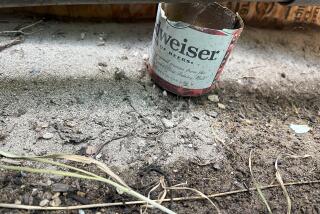Chinese medicine classes teach ancient remedies
The world is divided into two categories: those who get the flu, and those who don’t. Not only did I fall into the former, but it happened a week before my scheduled departure for Taiwan and Hong Kong. “Nobody goes to Hong Kong with the flu,” my husband, Paul, said.
Achy and exhausted, I had feverish nightmares of the “C” word (cancel); I had never backed out of a trip in my life. It was touch-and-go until the last minute . . . and then it became go.
The flu was over, but I was hacking like a computer geek. I spent much of the flight in the restroom, where I could convulse into coughing fits in private. Every time I opened the door, passengers glowered at me. By the time I arrived in Taipei, people were avoiding me as though I were Typhoid Mary.
I decided to see a Chinese doctor. I am no stranger to Chinese medicine, but I was a stranger to how they prescribe and take Asian medicine in Taiwan.
The kindly Dr. Chen did a pulse and tongue examination, leaned forward in his chair and said to me, “You have dampness in your heart and lung channels.” Fine. I could deal with that. But the medication was another story. Chen handed me 15 packets of fine sand. OK, I’m lying. Each packet contained a 16-herb mixture called Ching Fei Tang, but it tasted like sand. To be precise, sand from Malibu.
I was instructed to take the contents of one packet after each meal for five days. The protocol was this: Swallow a packet of Malibu’s finest and then pour warm water into my mouth as a chaser. Every time I finished a spectacular repast of dim sum, jellyfish with cucumber, chicken with grapefruit dressing and myriad other dishes concocted in heaven, I opened wide, leaned back, poured in the sand and coughed so violently that I sprayed everyone at my table with it. Miraculously, no one stabbed me with a utensil, and my cough vanished after five days, as Chen had predicted.
I became a devotee of Chinese medicine as it’s practiced in Asia, and as soon as I arrived in Hong Kong, I signed up for a free class in Chinese medicine offered to travelers ( www.goway.com/asia/ hongkong/hk_cultural.html). The mini-course is much in demand, and you must prove you are a foreigner by bringing your passport to an Eu Yan Sang herb shop, where the class takes place.
We learned that Chinese medicine is no upstart: The concept of balancing yin and yang was first proposed by Chinese philosophers 3,000 years ago, and Huangdi Neijing, an ancient medical text, has been used for two millenniums. Then the teacher, pharmacist Mary Cheng, delved into the ins and outs of Chinese medicine, such as which type of ginseng is least likely to produce a side effect (American ginseng) and what to take if you are pulling all-nighters or working into the wee hours (rose flower buds). To recover from chronic illness, bird’s nest is recommended; its source is the saliva of male tropical swiftlets.
After the class, students could consult with a Chinese doctor, but I had already vowed loyalty to Chen in Taiwan, so I browsed the herbal store for healing exotica such as deer tail and fish penises. Next to me was an Asian woman who was wearing a cloth mask over the lower portion of her face. I had seen many such face masks since I arrived in Hong Kong, and I politely inquired why she was wearing it. The woman replied, “I felt a little sick this morning.”
She went on to explain that Hong Kong citizens had been so terrified of severe acute respiratory syndrome (SARS), bird flu and the flu itself that as soon as someone felt sick, he or she donned a face mask so as not to spread germs.
I was bowled over by this simple, brilliant idea. Instead of dispensing flu shots next year, why not just ask everyone in the U.S. to wear a face mask at the first sign of illness? Fabric artists and designers could jump onboard and make flu prevention stylish.
My interlocutor informed me of another method of dealing with the flu: If you happen to be in Taiwan or Hong Kong, as I was, you can pop into the nearest Buddhist or Taoist temple, light some incense and pray that you and yours remain bug-free. And if you have extra Hong Kong dollars in your pocket, you can consult with one of the 161 soothsayers at Wong Tai Sin Temple to see what the germs have in store for you.
travel@latimes.com
More to Read
Sign up for The Wild
We’ll help you find the best places to hike, bike and run, as well as the perfect silent spots for meditation and yoga.
You may occasionally receive promotional content from the Los Angeles Times.






